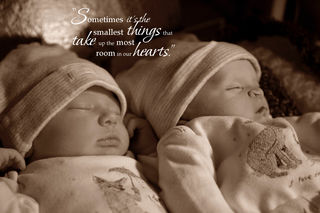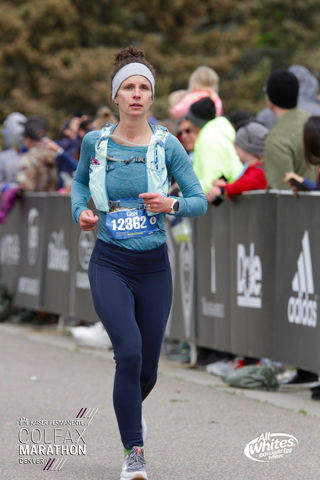As medical humanities scholars and mothers, we so admire the work of Dr. Erin Willer, an associate professor in Communication Studies at the University of Denver. We are inspired by her willingness to verbalize the messiness of bodies and health processes.
Recently, Erin published an article in Health Communication titled: “Running-in(to) transition: Embodied practice under the load of infertility, baby loss, and motherhood,” where she discusses running as a feminist practice. She highlights her experiences with infertility, miscarriage, neonatal loss, motherhood, aging, and the ways in which running has been therapeutic for living well with trauma. We asked Erin to discuss the release of her article during the COVID-19 pandemic as well as during infertility awareness week. Here is what she had to say:
For many people, the COVID-19 pandemic has led to canceled graduations, vacations, weddings, and conferences. We are grieving the loss of income, community, certainty, hope, and loved ones. These are the types of losses that those struggling with infertility also often experience month after month and year after year. Although tragic, there is something powerful about our collective grief at this time: We are not in it alone as every person on this planet is touched by the pandemic. Whether we are experiencing infertility or the pangs of isolation that COVID-19 brings, we are all weeping together.
As infertility awareness month occurs alongside the pandemic this year, I keep coming back to a Bizze Gold quote I saw several weeks ago: “There is a place between control and recklessness. It’s called surrender and the time is now.” Every time I read it, I cannot help but want to raise my hands to the sky, close my eyes, and shout, “Yes!” Yet, whereas we may want to surrender, to embody these words, how do we loosen our grip on our need for control in the face of COVID-19, infertility, or any number of other losses that leave us feeling reckless?

My article about running in the face of infertility, baby loss, the challenges of motherhood, and transitioning into my 40s is about answering this question and figuring out how to surrender. Before I could get to a place of healing, I had to learn how to run in my suffering rather than away from it.
When I first started running again after a 10-year hiatus, I leaped back into it too quickly, expecting that I would be able to run a half marathon after just a handful of months of training. I pictured myself crossing the finish line, the pain of my infertility and losses left in the dust behind me. This reckless leap led to overuse injuries in the tendons in my ankles, which then sidelined me for two months, intensifying my grief.
However, when I learned to surrender to running and my grief by taking things more slowly, I began to heal. Through running in rather than away from my pain, I learned to cope with the trauma that resulted from lack of compassionate health care, find community with other runners after suffering in isolation for so long, run through the stressors of motherhood, spend time with and honor my babies lost to miscarriage and my son Milo, who died three hours after he and his twin sister Matilda were born, and free myself from 10 years of grief.
Erin’s running tips for grief and self-revelation (adapted from her article):
1. Read other (women) runners’ memoirs for inspiration (e.g., Corbett & England, 2018; Faulkner, 2018a; Grunenwald, 2017; Menzies-Pike, 2016; Valerio, 2017). Nothing is more motivating than engaging with the stories of others whose running has carried them in times of hardship.

2. Run without headphones. Doing so allows you to do other things: to meditate, to brainstorm ideas, to make sense of what is ailing you, to listen to your body.
3. Keep a running journal. Writing (preferably immediately after you run but at any time) bears witness to your body’s celebrations and challenges, thoughts, emotions, and the meanings that emerge during your runs so that you can further make sense of your struggles.
4. Connect with other runners. In the communion of runners who are suffering (because we all are in some way), you come to understand that you are not alone in your running challenges or the agonies of life.
5. Share your body’s running stories with others. When women run, write, and share our stories of leakage (MacDonald, 2010)—of the blood, sweat, and tears that flow in the face of infertility, loss, motherhood, and aging—we resist cultural expectations that prefer our bodies’ stories of (mal)function remain hidden. In this space of endurance, we run in freedom.
Although I have noticed more runners in my neighborhood with the COVID-19 pandemic, I know that running is not everyone’s first choice when it comes to healing a loss. Health care providers also often discourage those experiencing infertility from engaging in rigorous exercise.

As a result, at this time of collective suffering, I cannot help but wonder about other ways, besides running, that might allow us to move through our pain in order to surrender. Activities like running, walking, yoga, biking, making art, playing music, or seeding a garden are ways for us to engage with our losses, reshape our identities, find others who share our experiences, and free ourselves from the grips of the need for control when our lives feel reckless. If we all can begin to move through our losses at this time in the world, perhaps our collective weeping may make space for our communal rebirth.
References
Corbett, C., & England, D. (2018). Reborn on the run: My journey from addiction to ultramarathons. Skyhorse.
Faulkner, S. L. (2018). Real women run: Running as feminist embodiment. Routledge.
Grunenwald, J. (2017). Running with a police escort: Tales from the back of the pack. Skyhorse.
MacDonald, S. M. (2010). Leaky performances: the transformative potential of the menstrual leak. Women’s Studies in Communication, 30(3), 340-357.
Menzies-Pike, C. (2016). The long run: A memoir of loss and life in motion. Crown.
Willer, E. K. (2020). Running-in(to) transition: Embodied practice under the load of infertility, baby loss and motherhood. Health Communication. Retrieved from https://www.tandfonline.com/doi/abs/10.1080/10410236.2020.1748830
Valerio, M. (2017). A beautiful work in progress: A memoir. Grand Haven Press.




